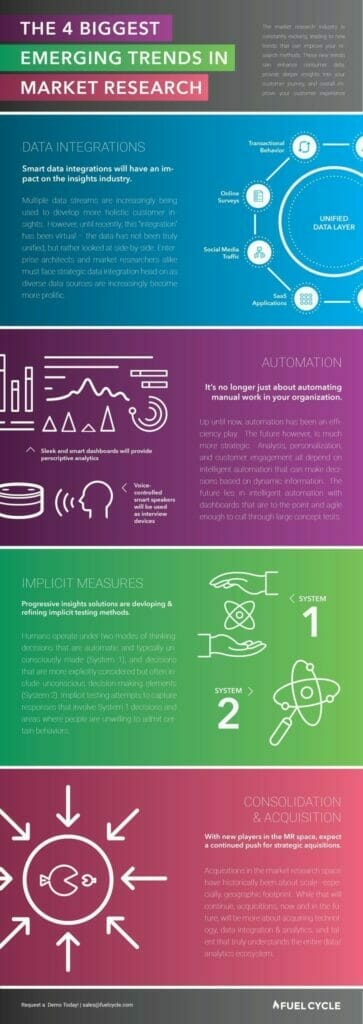By: Zoe Rose, Senior Research Associate
Research is generally split into Quant and Qual
Quantitative research methods emphasize objective measurements through the numerical analysis of data, often collected via survey. This type of research allows you to quickly collect a large amount of data and is useful for detecting patterns in human behavior. To put it simply, quantitative gets you to the what. More specifically, what consumers buy and do. Qualitative research, on the other hand, is primarily exploratory. It uses naturalistic, open-ended methods to help researchers gain an understanding of consumers’ underlying opinions and motivations, as well as the context surrounding behavior and gets you to the why.
The future of quantitative research is rosy
“Big Data” has been a buzz-word on the menu for a while now. Exponential innovations in technology are constantly increasing the ease with which we can collect, analyze, and share gargantuan amounts of statistical data. This arms everyone, from hobbyist trend-trackers to C-level decision makers, with more reliable information, so they can more accurately calculate risk vs. reward and make more empowered strategic choices. It’s no surprise that the focus for today’s quant researchers and data mining firms is inventing new technological tools that can collect tons and tons of data instantaneously, at the moment of purchase—and even before purchase.
Qualitative methods are, by tradition, non-technological
Qualitative researchers tend to have backgrounds in the soft sciences and work “in the field,” observing and interviewing research subjects in their natural environment, sometimes for months or years at a time. Qualitative researchers are trained to emphasize the culturally constructed nature of reality and perception, to acknowledge the dynamic between themselves and what is being studied, and to consider the situational contexts that shape inquiry and insight. The word qualitative itself implies an emphasis on the quality and meaning of things – rather than measurements of quantity or frequency. Today, there are few recipes for truly enriching quick-qual, but we’re working on it!
A marriage of both methods
Quantitative research can give us an objective snapshot of the relationship between two variables, but it doesn’t shed much light on why that relationship exists. Qualitative research can give us a wide-angle view of the big picture: what consumers think and feel, and why. However, it doesn’t let you apply empirical generalizations to a larger population, nor test theories scientifically. Mixed methodologies can offset the weaknesses of quant and qual, by combining the most potent elements of each for tailor made research design and ultimately, a broader perspective of the overall research topic. At Fuel Cycle, I use mixed methodologies all the time. Tools like Live Chats, Diary Studies, and Photo/Video Album analysis add richness and color to insights gleaned from lean quantitative strategies. The final results always include both numbers (to ground) and words (to bring the data to life), and our deliverables can speak to clients in all departments; research, branding, marketing, product development, and the executive board. The most meaningful work always comes from our efforts to “humanize the data,” as the saying goes. We are studying people after all.



